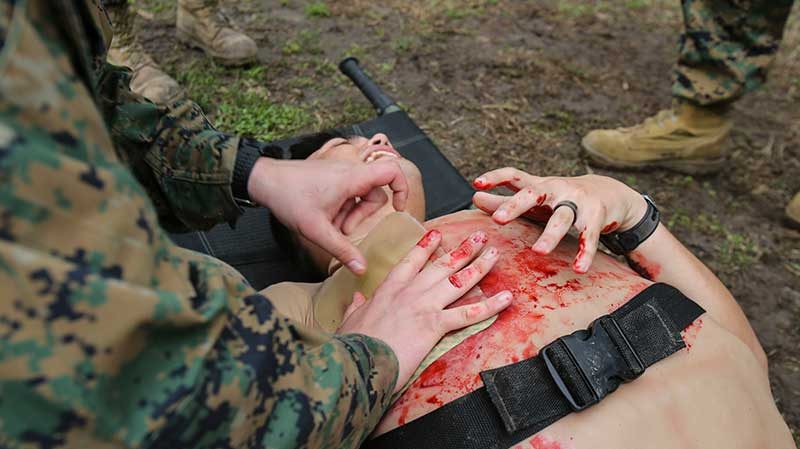Criteria for Evaluating Chest Seals
Effectiveness and Reliability
When it comes to evaluating chest seals, the first box to tick is effectiveness. After all, a chest seal is designed to address life-threatening chest injuries, such as open pneumothorax, often caused by gunshot wounds, stab wounds, or other forms of penetrating trauma. For this reason, a reliable chest seal must have an incredibly strong adhesive that can hold even in the presence of sweat, blood, hair, and challenging environments—think the desert heat of a military zone or the humidity of a subtropical region.
For instance, when choosing a chest seal vented type, effectiveness often hinges on its ability to control the airflow to avoid tension pneumothorax—a key complication that emergency responders need to prevent. Vented chest seals, like the Hyfin or Bolin, offer one-way valves to let air escape while preventing re-entry. This feature helps in reducing the risk of life-threatening pressure buildup.
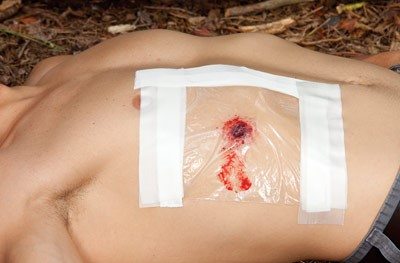
In one study by the Injury, adhesive failure was found in up to 7% of chest seal applications that did not meet environmental expectations. This underscores the importance of choosing a chest seal proven to perform well under tough circumstances. The best chest seal should adhere fast and stay in place until the patient reaches further medical help—no compromises here.
Cost-Effectiveness and Market Availability
Next up, let’s talk business: cost-effectiveness. Every procurement professional understands that while quality is paramount, staying within budget is equally important. The cost-effectiveness of a chest seal involves a balance between price, reliability, and the additional features offered. Some chest seals come in kits that include multiple seals or offer vented and non-vented options, which can be cost-efficient if you’re catering to diverse needs.
Take, for instance, the Fonitaniya™ Chest Seal—a popular choice due to its competitive price and availability in multiple global markets. With an average unit cost around $9 (depending on order volume and shipping), Fonitaniya™ is often praised for its solid balance between affordability and performance. Procurement officers working with tight budgets find this balance invaluable. On the other hand, higher-end chest seals like the Sentinel Chest Seal can cost upwards of $13 per unit but may include additional features like enhanced adhesives and venting technology that can be life-saving in extreme conditions.

Availability is also a major factor. The Asherman Chest Seal, for instance, is well-regarded for its effectiveness but is often in limited supply compared to the more frequently stocked Hyfin or Bolin chest seals. For a procurement department, the ability to secure reliable stock at the right time can make a huge difference. The lesson here? Always take into account both the immediate cost and the long-term availability when deciding which chest seals to stock.
At Fonitaniya™, we provide both cost-effective and all-year-around available stockings of First Aid Chest Seal with prime adhesiveness.
Comparative Analysis of Popular Chest Seals
Now that we’ve covered the essential criteria for evaluating chest seals, let’s move on to a comparative analysis of some of the most popular chest seals available in the market.
Asherman Chest Seal
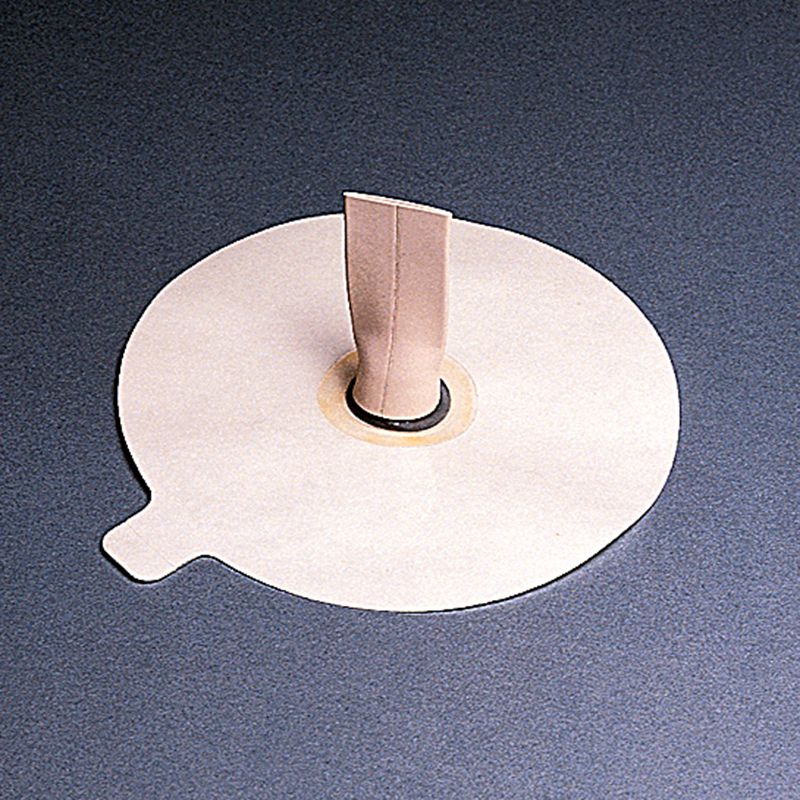
The Asherman Chest Seal is a classic in the field. Known for its simplicity, it features a one-way valve that is effective for venting air from the chest cavity, reducing the risk of tension pneumothorax. Its adhesive quality is dependable, although some users have noted that it may struggle to adhere to particularly sweaty or hairy skin. Cost-wise, the Asherman is often positioned in the mid-range, making it a solid choice for those seeking reliability without breaking the bank.
Pros: Simple design, effective one-way valve, mid-range cost.
Cons: Adhesive struggles in wet or hairy conditions, limited availability in some markets.
Hyfin Chest Seal
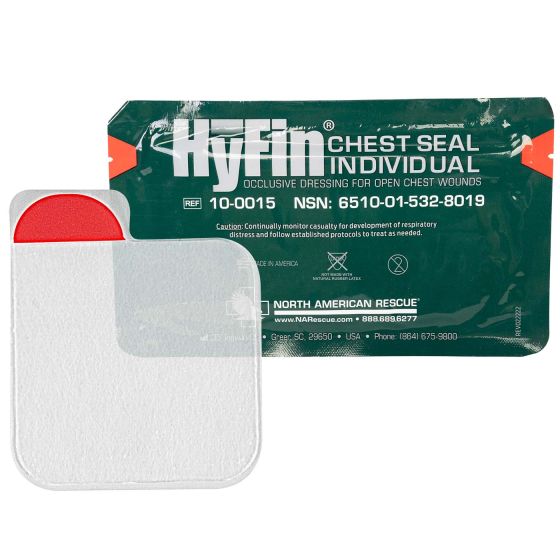
The Hyfin Chest Seal is a highly regarded product, especially in military and emergency medical services. It comes in both vented and non-vented versions, providing flexibility depending on the nature of the injury. The vented version has three channels to ensure air can escape even if one or two channels are blocked. The Hyfin also stands out for its ease of use, even under extreme conditions, and its strong adhesive.
Pros: Versatile (available in vented and non-vented), triple-vent technology, strong adhesive.
Cons: Higher cost compared to other brands, sometimes difficult to source in bulk.
Fonitaniya™ Chest Seal
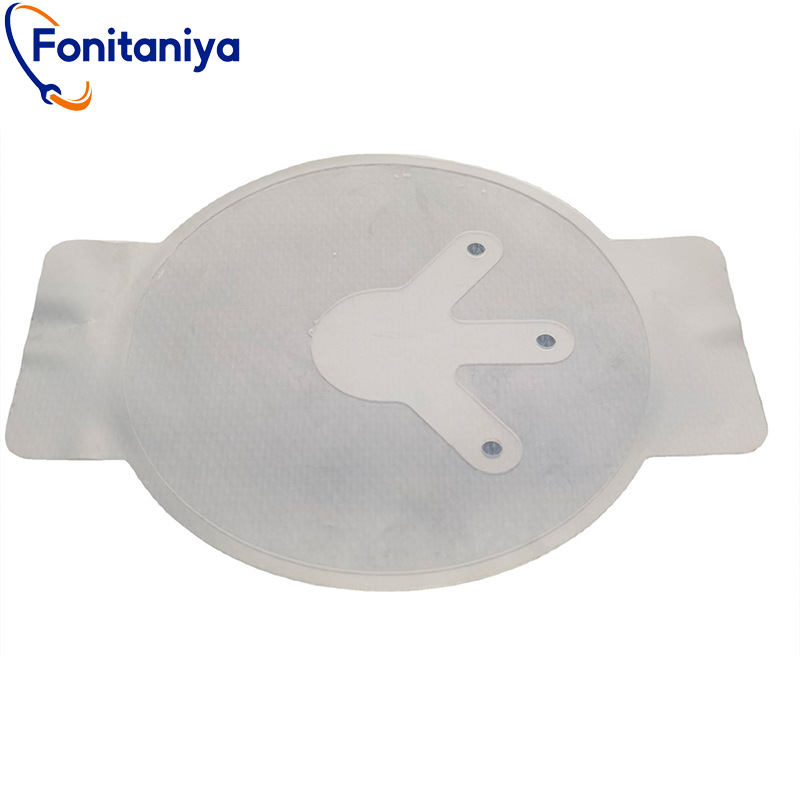
Fonitaniya™ is a popular option for those seeking a balance between cost and performance. It’s known for its solid adhesive and comes in both single and triple-pack versions, making it ideal for varied use cases. The vented version is effective, although it lacks the advanced multi-channel venting system seen in more premium brands. At around $9 per unit, it’s an affordable option that doesn’t compromise much on quality.
Pros: Affordable, reliable adhesive, available in triple-pack, bulk availability is consistent.
Cons: Slightly lack of advanced venting technologies.
Bolin Chest Seal
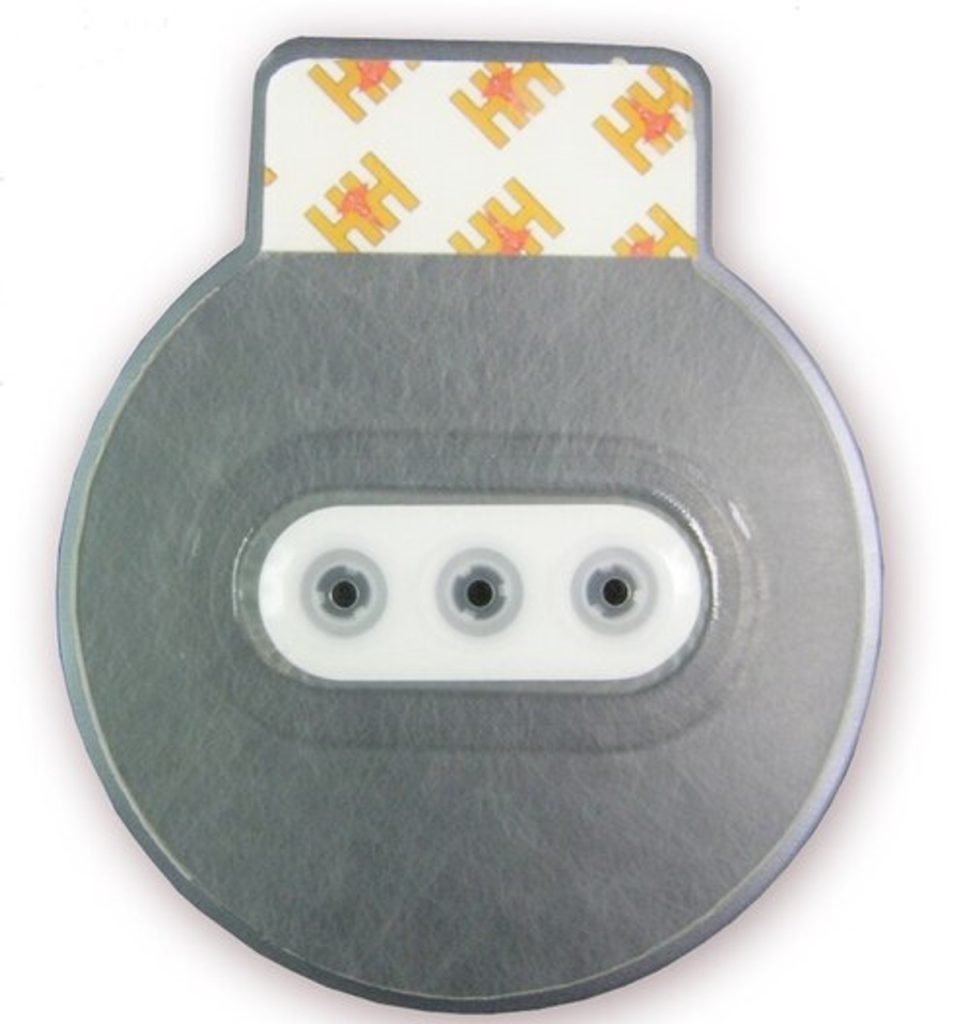
The Bolin Chest Seal is distinguished by its unique three-vent design, which ensures effective air release and reduces the risk of blockage. It is highly effective for managing open chest wounds, particularly in high-stress environments. The Bolin is also known for its ability to adhere well under adverse conditions, such as exposure to blood and sweat.
Pros: Three-vent system, effective in challenging conditions, strong adhesive.
Cons: Slightly higher price point, bulk availability can be inconsistent.
Sentinel Chest Seal
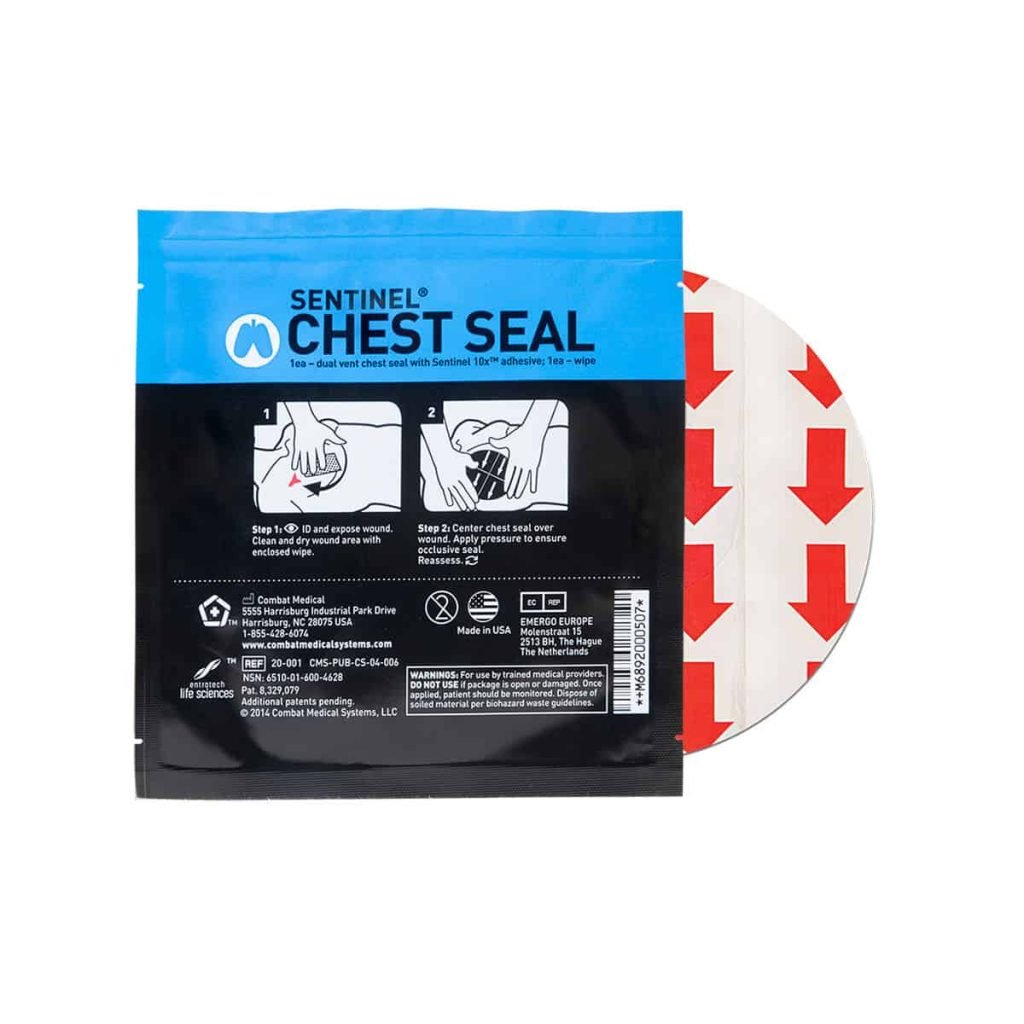
The Sentinel Chest Seal is positioned as a premium product, often used by advanced emergency responders. It features enhanced adhesive technology, designed to work even on the most challenging surfaces, and is available in vented and non-vented forms. The vented version offers a one-way valve that minimizes the risk of tension pneumothorax while ensuring ease of application.
Pros: Premium adhesive, available in both vented and non-vented, highly reliable.
Cons: Higher cost, may not be the most cost-effective option for bulk procurement.
Comparative Chart
| Chest Seal | Type | Average Cost of Manufacturing (USD) | Average Retail Price (USD) | Adhesive Strength | Venting Mechanism | Availability |
|---|---|---|---|---|---|---|
| Asherman | Vented | 10 | 20 | Moderate | One-way valve | Limited in Europe and South America |
| Hyfin | Vented/Non-Vented | 12 | 22 | Strong | Triple-vent | Limited in parts of Asia |
| Fonitaniya™ | Vented/Non-vented | 9 | 21 | Strong | Triple-vent | Widely available globally |
| Bolin | Vented | 11 | 23 | Strong | Three-vent | Limited in Africa and some parts of Asia |
| Sentinel | Vented/Non-Vented | 13 | 25 | Very Strong | One-way valve | Limited in Eastern Europe and Africa |
This comparative analysis should help you make an informed decision based on your specific requirements, whether you are looking for the most cost-effective option or the most reliable adhesive for challenging environments.
Market Demand
Global Market
The global demand for chest seals is expected to grow steadily over the next five years, driven by both military and civilian needs. In conflict zones and areas with active military operations, the use of chest seals is critical, and demand will remain high. However, the civilian market is also expanding, particularly as more countries adopt advanced trauma kits for emergency medical services and disaster preparedness.

North America
The increased frequency of mass casualty incidents has prompted municipalities and organizations to invest in better-equipped trauma response kits. This trend is expected to drive significant growth in chest seal demand. In Europe, the focus on improving public safety measures and increasing the availability of first-aid kits in public spaces is also contributing to market growth.
Emerging Markets
Emerging markets in Asia and Africa are gradually adopting chest seals as part of their emergency medical infrastructure, although availability remains an issue in some areas. As these regions continue to improve their healthcare systems, demand for reliable, cost-effective chest seals is likely to rise. This is a key opportunity for manufacturers to expand their reach and establish a presence in underserved markets.
Strategic Recommendations for Procurement
From our analysis, we see that the decision-making process for procuring chest seals should be guided by a combination of operational needs, budget considerations, and future-readiness. The Fonitaniya™ Chest Seal, for example, represents a cost-effective choice that performs well in various scenarios, making it a reliable standard option for many.
A diverse stock of vented chest seals mixed with some non-vented chest seals helps ensure preparedness, especially in unpredictable environments where the nature of injuries can vary greatly.
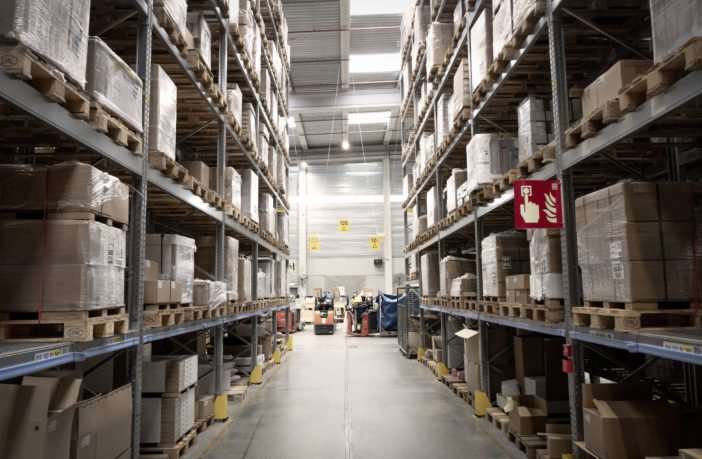
Availability can be a limiting factor, especially in emerging markets. Establishing relationships with suppliers who have strong distribution networks can mitigate risks related to stock shortages. Understanding the specific limitations of certain brands in various regions is invaluable for ensuring that procurement plans are robust and adaptable.
Conclusion
After evaluating various chest seals, it’s clear that each has unique strengths that make it suitable for different applications. The Asherman Chest Seal offers simplicity and reliability, making it a solid mid-range choice. The Hyfin Chest Seal stands out for its versatility and strong adhesive, while the Fonitaniya™ Chest Seal provides a great balance between cost and performance. The Bolin Chest Seal’s three-vent design is ideal for high-stress environments, and the Sentinel Chest Seal, with its premium features, is designed for those who require the highest level of reliability.
Our Commitment and Vision
We at Fonitaniya have been proudly manufacturing medical adhesive devices for over 14 years. Our experience has allowed us to perfect the balance between quality, affordability, and innovation. We believe that medical devices should not only save lives but also be accessible and reliable for everyone, no matter the situation or environment.
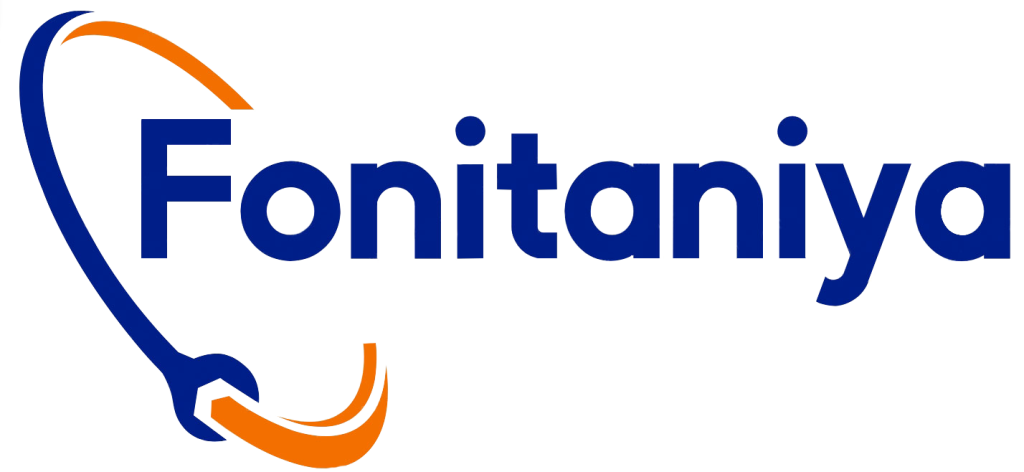
Our commitment goes beyond just providing a product; we aim to be a trusted partner in emergency medical care. Our vision is to lead the market by not only offering cost-effective and high-quality products but also by advancing the technology behind trauma care. We’re here to support you, share our expertise, and together make emergency medical care more effective and efficient.
FAQs
What is a chest seal used for?
A chest seal is used to treat open chest wounds. It helps prevent air from entering the chest cavity, reducing the risk of pneumothorax, a potentially life-threatening condition.
How do you apply a chest seal?
Clean the wound area to remove blood, sweat, or debris. Place the adhesive side of the chest seal directly over the wound, ensuring a tight seal. If the seal is vented, align the vent over the wound to allow air to escape. A detailed guide can be found here: How to apply a chest seal.
What is the difference between vented and non-vented chest seals?
Vented chest seals have one-way valves that let trapped air escape but prevent air from re-entering. Non-vented seals do not have a valve and provide a continuous seal over the wound.
Can you use a chest seal on multiple wounds?
Yes, you may need to use multiple chest seals if there are multiple chest wounds. It is essential to cover all penetrating chest injuries to prevent air from entering the chest cavity.
What should you do if the chest seal doesn’t stick?
If a chest seal doesn’t stick, try to clean the wound area as thoroughly as possible. Wipe away any blood, sweat, or dirt that might prevent adhesion. If it still doesn’t stick, apply manual pressure to hold it in place until further help arrives.
Can chest seals be used in all environments?
Chest seals are designed to work in various environments, but their effectiveness can vary. Extreme conditions like heavy rain, sweat, or dirt may impact adhesion. It is crucial to choose a chest seal that has a strong adhesive suitable for challenging environments.




